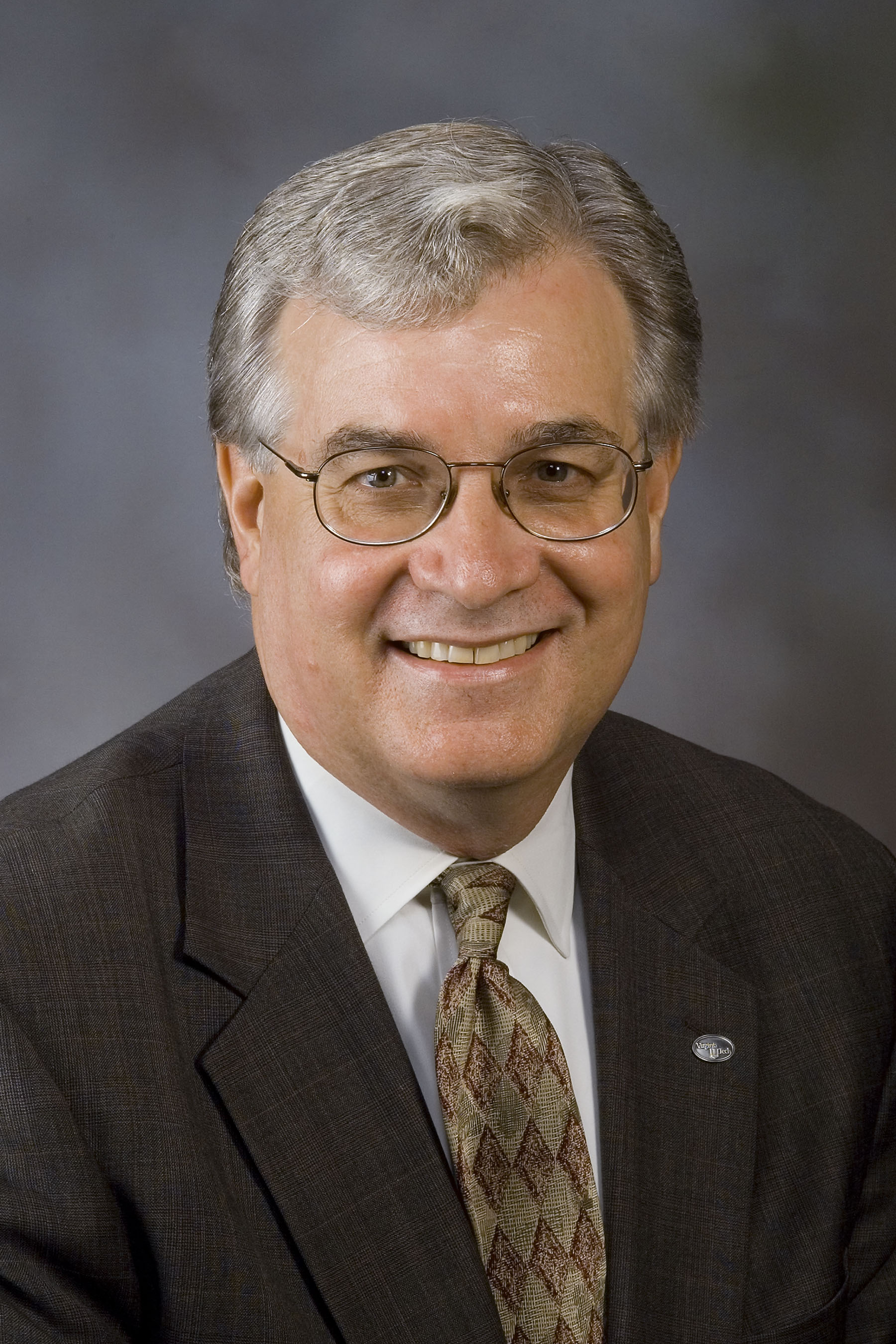Larry Hincker, associate vice president for university relations, announces retirement

Lawrence "Larry" Hincker, associate vice president for university relations at Virginia Tech, has announced he will retire from his position later this year.
Hincker, who has served as university spokesperson and the senior communications officer under four Virginia Tech presidents, will remain with the university until his replacement begins work.
"Larry truly is a leader in institutional communications, marketing, and branding," said Virginia Tech President Timothy Sands. "During his 25 years of service to Virginia Tech, his highly sophisticated university-wide integrated marketing program coupled with university strategic goals and the genius of the Invent the Future tagline has secured Virginia Tech’s reputation as a leading research university -- both nationally and internationally.
"Larry has been a mentor and inspiration to a generation of communicators, not only at Virginia Tech but at institutions of higher education across the world," said Sands.
Hincker was the public face of Virginia Tech as it dealt with the largest media gathering on any university campus following the tragedy of April 16, 2007.
"In our darkest hour, Larry's leadership, resolve, and compassion helped to hold our devastated community together," said President Emeritus Charles W. Steger. "He represented all of the Hokie Nation as he sought to do the impossible—explain the unexplainable to millions of people watching all over the world. Yet, beyond that, over the decades I had the opportunity to work with him, Larry has been an ambassador for the university and a strategic thinker and valued colleague to the university’s leadership."
Initially hired as director of educational communications in 1988, Hincker was named head of University Relations the following year. Since then, he has been responsible for all communication activities of the university, including media relations, college communications, development communications, television productions, publications, marketing, web communications, trademarks and licensing, and WVTF, the public radio station serving Central and Southwest Virginia.
"Most gratifying to me are the changing and improved perceptions of Virginia Tech’s reputation," said Hincker. "As communicators, we don’t create the brand; we simply put a spotlight on it. I am pleased to know that University Relations had some role in helping cement our place among higher education leaders."
In 1990, Hincker launched a decades-long brand management program to help build name recognition for Virginia Tech, the name derived from the university's legal title, Virginia Polytechnic Institute and State University.
As part of that comprehensive brand management program, Hincker developed the first ever "visual standards manual" to standardize the university's identity at a time when multiple names for the university were used. The creation of the pylon-inspired university shield logo, still in use today, was a hallmark of that program.
In the following decade, Hincker led a university-wide integrated marketing program coupled with university strategic goals and the tagline, Invent the Future. Hincker then launched the university's first ever national advertising plan supporting brand efforts and undergraduate recruitment.
Hincker brought Virginia Tech into the digital age of communication overseeing the first generation of university websites, and later advocated for and managed the first university-wide webpage content management system.
In 2006, he established the university's news and information service, Virginia Tech News, which now reaches more than a million readers a year. That same year, Hincker led the effort to establish what is today known as VT Alerts.
By continually reducing production costs, Hincker has expanded the reach of Virginia Tech Magazine, the university's flagship publication for alumni. Today, all university alumni receive the award-winning magazine, something few large universities are able to do today.
The university's trademarks and licensing office, under Hincker's direction, has increased revenue more than five-fold in little more than a decade.
Hincker opened the university's first visitor center in a former farmhouse off Southgate Drive, and later championed the iconic Visitor and Undergraduate Admissions Center, now a gateway to campus.
He co-chaired the university's 125th anniversary celebration and co-wrote the university's largest selling coffee table book, "Images and Reflections."
To further promote a broader appreciation of university history, Hincker developed campus building "bio markers" which feature biographical sketches for whom major campus buildings are named.
Over the years, Hincker developed communications campaigns for several key university initiatives including the Smart Road, then a controversial public infrastructure project; the university's entry into the Atlantic Coast Conference; launches of five university strategic planning efforts; and held leadership positions on two state-wide bond campaigns.
Locally, Hincker was the university’s chief advocate for the town's economic development initiative, The Blacksburg Partnership.
Before coming to Virginia Tech, Hincker spent 14 years in corporate communications positions including manager of public information for a division of Westinghouse in Washington state and employee communications manager for a division of Rockwell International. He was visual communications manager for a Washington state utility.
A true Hokie himself, Hincker received his MBA from the Pamplin College of Business and a bachelor's degree from Brooks Institute.
Dedicated to its motto, Ut Prosim (That I May Serve), Virginia Tech takes a hands-on, engaging approach to education, preparing scholars to be leaders in their fields and communities. As the commonwealth’s most comprehensive university and its leading research institution, Virginia Tech offers 240 undergraduate and graduate degree programs to more than 31,000 students and manages a research portfolio of $513 million. The university fulfills its land-grant mission of transforming knowledge to practice through technological leadership and by fueling economic growth and job creation locally, regionally, and across Virginia.


